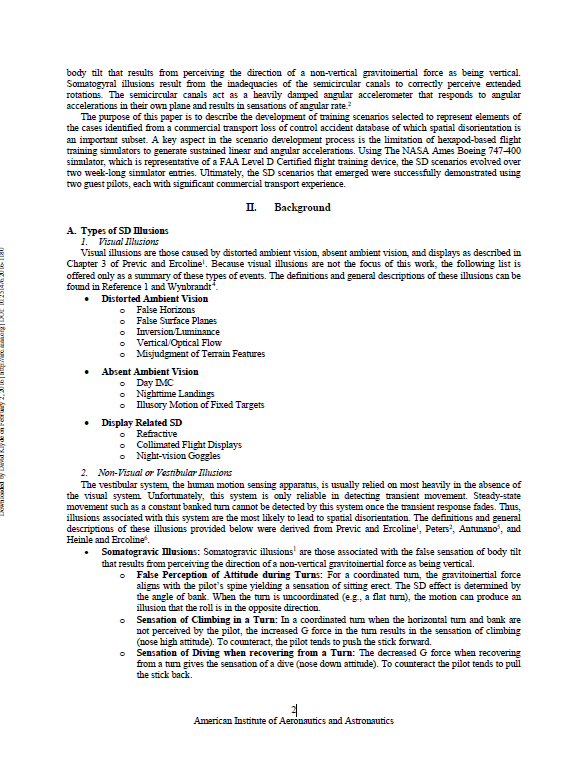
Development of Spatial Disorientation Demonstration Scenarios for Commercial Pilot Training (STI Paper Series)
A study of world-wide commercial jet transport accidents by The Boeing Company found the most common events to be loss of control associated with an inability of pilots to recover from upsets and unusual attitudes. A key component in some of these events was pilot spatial disorientation. In terms of non-visual illusion cases, the spatial disorientation most commonly took the form of somatogravic and/or somatogyral illusions. Somatogravic illusions are those associated with the false sensation of body tilt, while somatogyral illusions are those associated with the inability of the human to perceive extended rotations. Improved pilot training in these abnormal flight conditions, including the ability of commercial pilot training simulators to replicate spatial disorientation, is needed to reduce loss of control accidents. A Federal Aviation Association-sponsored program led by Systems Technology, Inc. is currently developing spatial disorientation demonstration training scenarios using the B747-400 flight simulator at NASA Ames Research Center. Scenarios for a missed approach/go around and a steep bank, constant altitude turn have evolved from evaluations in the simulator conducted over several weeks.
Download Now

